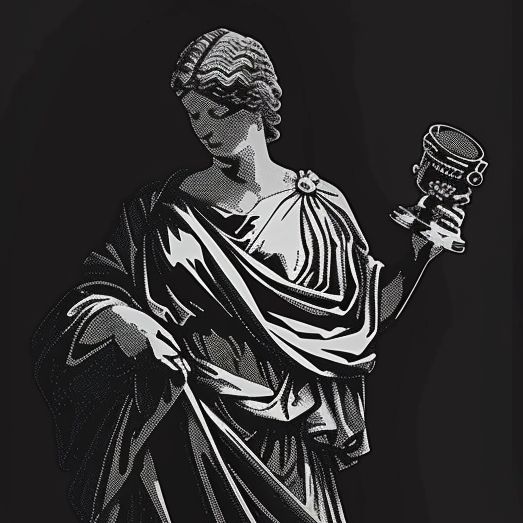
AntiTalk vol.04丨当代剧作的局限:在被瓦解的语境中重写奥瑞斯提亚

城市余数City remainder
Deep Dive
Why does Apollo represent a new order in 'The Eumenides'?
Apollo represents the new order of the Olympian gods, symbolizing light, reason, cleanliness, and order, which contrasts sharply with the older, more chaotic and violent Titans represented by the Furies. His stance against the Furies reflects the shift from an older, more primal form of justice to a more structured and rational one.
What is the significance of the gender dynamics in 'The Oresteia'?
The gender dynamics in 'The Oresteia' are crucial as they highlight the transition from a matriarchal to a patriarchal society. Characters like Clytemnestra and the Furies challenge traditional gender roles, while figures like Apollo and Athena reinforce the new patriarchal order. This tension and eventual resolution underscore the societal shifts in ancient Greece.
How does 'The Oresteia' critique the concept of justice?
'The Oresteia' critiques the concept of justice by presenting it as a cycle of vengeance that is ultimately transformed into a more structured legal system. The Furies' demand for blood justice is countered by Apollo and Athena's arguments for a more rational and orderly form of justice, reflecting the evolution of societal norms.
What role does Athena play in the resolution of 'The Eumenides'?
Athena plays a pivotal role in the resolution of 'The Eumenides' by mediating between the Furies and the new order represented by Apollo. She persuades the Furies to accept a new role as protectors of the city, thus integrating the old and new forms of justice and ensuring the stability of the polis.
How does 'The Oresteia' reflect the political and social changes in ancient Greece?
'The Oresteia' reflects the political and social changes in ancient Greece by depicting the transition from a tribal, blood-based justice system to a more structured, legalistic one. This mirrors the broader societal shift from a clan-based society to a more centralized polis, emphasizing the importance of order and rationality over chaos and vengeance.
What challenges does contemporary theater face in addressing issues like patriarchy?
Contemporary theater faces challenges in addressing issues like patriarchy because the context in which these issues are understood has significantly changed. The traditional gender roles and societal structures that once provided a clear framework for such narratives have been largely dismantled, making it difficult to create works that resonate with modern audiences in the same way.
How does 'The Oresteia' use gender inversion to highlight societal changes?
'The Oresteia' uses gender inversion to highlight societal changes by portraying characters like Clytemnestra and the Furies as powerful, assertive figures who challenge traditional gender norms. This inversion serves to underscore the broader societal shifts from a matriarchal to a patriarchal order, emphasizing the complexities and tensions involved in this transition.
What is the significance of the trial scene in 'The Eumenides'?
The trial scene in 'The Eumenides' is significant as it represents the formalization of justice and the establishment of a legal system that supersedes the older, more primal forms of vengeance. The trial, presided over by Athena, symbolizes the integration of the old and new orders, ensuring that justice is administered in a more rational and orderly manner.
How does 'The Oresteia' address the theme of revenge?
'The Oresteia' addresses the theme of revenge by presenting it as a cycle that perpetuates violence and chaos. The trilogy ultimately advocates for a transition from personal vengeance to a more structured legal system, where justice is administered by the state rather than individuals, thus breaking the cycle of retribution.
What is the role of the Furies in 'The Oresteia'?
The Furies in 'The Oresteia' represent the older, more primal form of justice based on blood vengeance. They pursue Orestes for killing his mother, Clytemnestra, and their eventual transformation into the Eumenides (the 'Kindly Ones') symbolizes the integration of this older form of justice into the new, more rational legal system of the polis.
- 阿波罗代表秩序与理性,复仇女神代表血亲复仇与激情。
- 阿波罗的辩论中存在双标,他维护的原则与复仇女神的原则发生冲突。
- 雅典娜的介入代表一种更温和的解决方式,将复仇转化为城邦的敬畏。
- 王后的人物形象体现了性别角色的错位和对传统秩序的挑战。
Shownotes Transcript
这一期是奥瑞斯提亚系列的最后一期。
在这一部分中,Anti和我从奥瑞斯提亚的性别书写出发,结合当代的一些剧作做出一些探讨。在《坠楼的审判》中,女主和男主紧张的关系,与这部剧作形成了怎样的对照?如果想在当代写作一部类似奥瑞斯提亚三部曲的剧作来批判父权制,应该如何书写。
剧作已经成为了“文化消费品”的今天,作为一种政治生活的“观剧”很大程度上已经被瓦解了。我们又应该如何重新开始书写和观看呢?
这也是一个未能得到答案的问题。